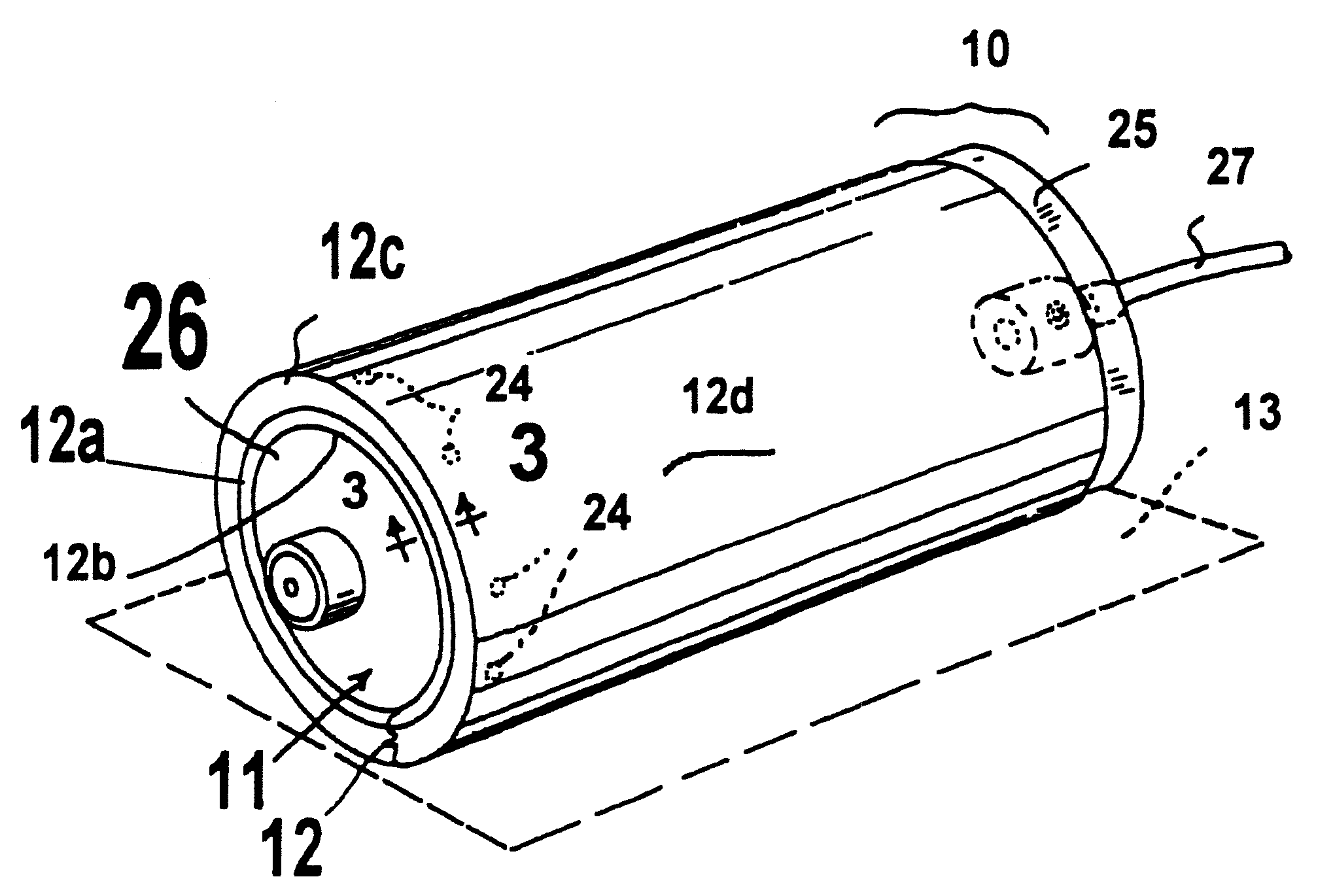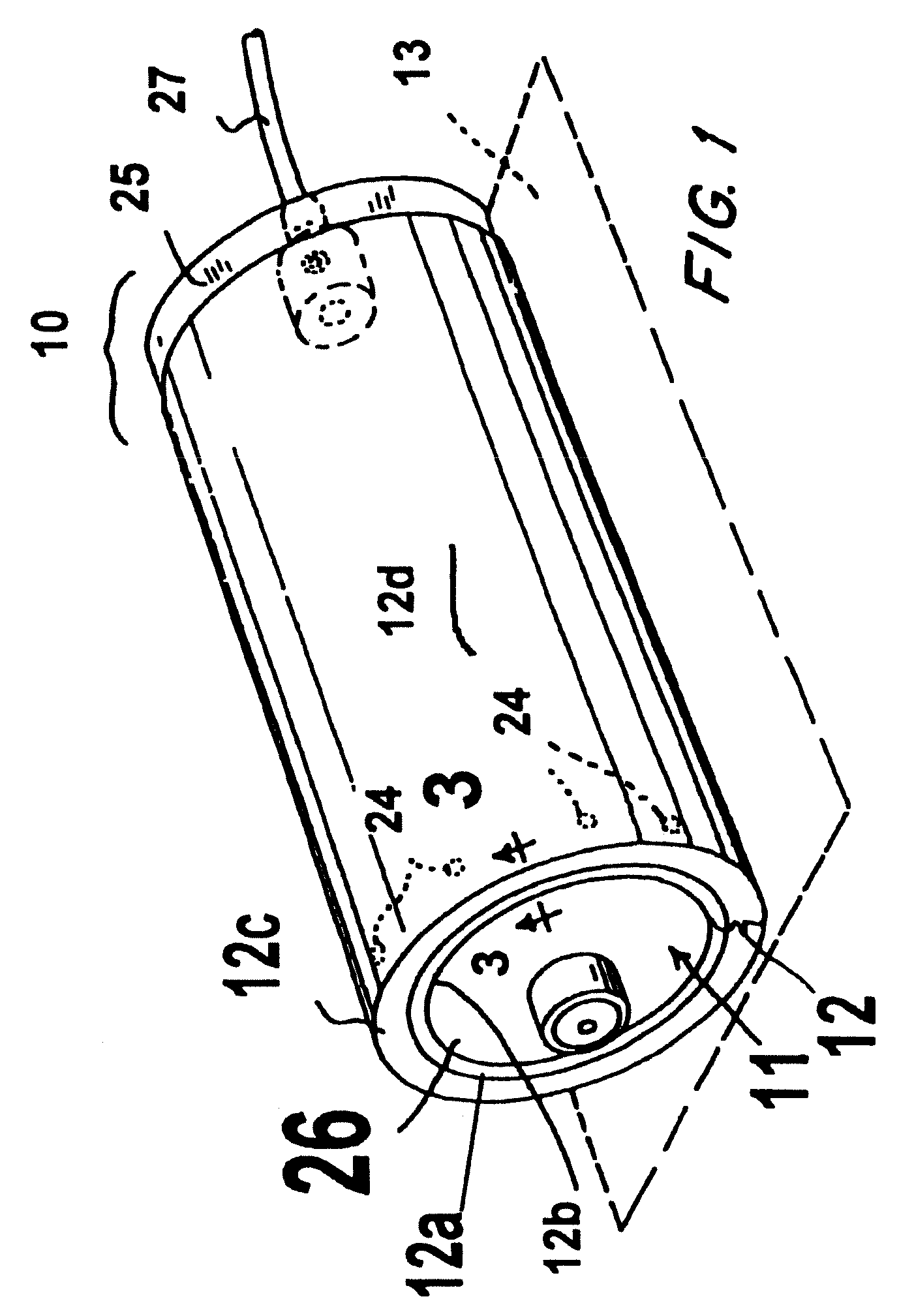Over time, the ink, which can be acetate-based or
alcohol-based, and the solvents tend to degrade the materials forming the blanket cylinder.
The use of this type of blanket cylinder gives rise to various problems, which for the most part arise due to the
asymmetry of the slot in the outer surface of the rotating cylinder during operation of the printing machine.
Then, in a very
time consuming process that requires considerable operator skill, the
nitrile rubber solution with the microspheres is applied to the surface of the inner cylinder (core) by a knife
coating technology or ring
coating technology for example to build up a precursor layer of about one
millimeter in radial thickness.
However, because
nitrile rubber does not adhere well to
nickel surfaces, when the core is formed of
nickel, an
adhesive preparation must be provided.
However, the required operator involvement and manipulation steps in the production process required to fabricate the known blanket sleeve prevent significant
automation of this fabrication process.
The low level of
automation adversely affects the consistency of the sleeve that can be produced.
Indeed, the rampant inconsistency of the blanket sleeves has led many end users of the sleeves to test newly acquired sleeves and grade them A, B or C according to the degree of
compressibility and assign them accordingly for various types of printing jobs.
However, the consistency of the compressible layer obtainable in the known rubber blanket sleeves is limited by the high degree of operator involvement and judgment during the fabrication process as well as by the unpredictable ambient conditions under which different sleeves are made for the same end-user.
Moreover,
residual solvent in the compressible layer will continue to create voids in the compressible layer and thus changes the
compressibility of the overall sleeve over time.
Thus, while a known rubber blanket sleeve may be delivered to the end-user with an acceptable
compressibility, the compressibility of that sleeve may change enough over time to become outside the acceptable range.
Additionally, the aforesaid known blanket cylinder presents an outer layer of
natural rubber or elastomeric material with inferior physical and mechanical characteristics, equivalent to those of rubber.
Consequently, the outer layer undergoes considerable wear during use.
This wear is caused by the action on this outer layer of the blanket sleeve by the
metal plate of the plate cylinder or by the edges of the substrate being printed, or by poor resistance to the wash solvents used in the printing process.
A fold or other thickness variation in the substrate can irreversibly damage the surface of the outer layer and render the entire cylinder useless.
Once the original thickness of this outer printing layer is diminished, the blanket sleeve becomes incapable of transferring the inked data to the substrate with the desired resolution of the printed image.
This is particularly a problem in presses that print on both sides of the substrate and thus have a blanket cylinder on each side of the substrate, thus potentially doubling the problem as a bad image on one side of the substrate renders the entire substrate useless.
Furthermore, when the sleeve has a thin
nickel core, the sleeve can become irreversibly damaged because the thin nickel core tends to kink during mounting and dismounting of the sleeve onto the rotary mandrel of the
offset printing machine.
These factors combine to curtail the “useful life” or duration of a blanket sleeve of the aforesaid known type.
This curtailment presents obvious drawbacks from an economical viewpoint, especially in the cost of employing an offset printing machine that requires a plurality of blanket cylinders.
 Login to view more
Login to view more  Login to view more
Login to view more 


